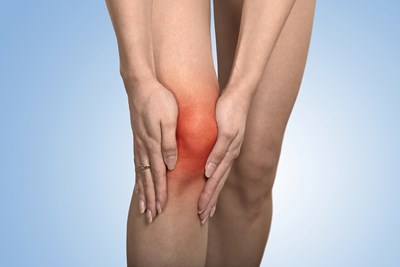Total knee replacement, also referred to as knee arthroplasty, restores function and alleviates pain in people with diseased knee joints. Knee joints are usually damaged due to arthritis or a severe injury.
Artificial knees are available in a variety of designs that are specific to your age, weight, health, and level of activity. The majority of replacements act like your knee. They can roll and glide as it bends, and they may even work better than your old knee. Here is a look at what you need to know about total knee replacements.
Candidates for Surgery
If you experience severe pain that is caused by osteoarthritis, you may be a candidate for a total knee replacement—osteoarthrisis is the most common cause for a knee replacement.
Preparing for Surgery
You will meet with your orthopedic surgeon before surgery. During the appointment, you will give a medical history and undergo a physical examination in order to determine your knee’s range of motion, strength, and stability. Imaging tests, such as X-rays, are done to evaluate your knee as well.
The Procedure
Surgery for a knee replacement involves cutting away damaged cartilage and bone from your thigh bone, kneecap, and shin bone. The damaged cartilage and bone are then replaced with an artificial joint that is made of metal and plastic parts.
Risks and Complications
Although risks and complications are uncommon, a total knee replacement is a surgery, and any surgery comes with risks that you should be aware of. Risks and complications include:
- Blood clots in the leg vein or lungs
- Infection
- Stroke
- Heart attack
- Nerve damage
Another risk you should be aware of is failure of the artificial knee joint. Artificial knees can wear out with daily use. If the joint is stressed or a lot of demand is placed on the joint due to high-impact activities, like sports, there is a higher risk for joint failure.
Recovery
Following surgery, you may need to use a cane or walker to help you get around. Assistance is usually needed for several weeks after the operation. Adaptations to your living space, such as grab bars in the bath, a shower bench or chair, and a toilet seat with arms should be made.
After about 3 to 6 weeks, you can begin to resume most of your day-to-day activities. You can also start driving again around 3 weeks, if you are able to sit comfortably in a car and if you have muscle control and strength to work the brakes and accelerator.
A physical therapist will design a program specific to your needs to help you regain motions, balance, and strength in your knee.
Outlook
After recovery, you will be able to take part in low-impact activities. For example, you can walk, swim, golf, or bike. It is advised that you avoid high-impact activities, such as sports that require contact or jumping.
Most patients find that a total knee replacement greatly reduces or completely eliminates the pain they experienced before the surgery.



